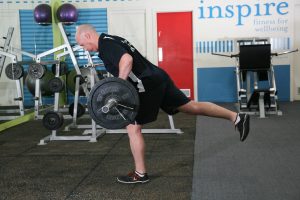It’s common in many gyms across the world to see people pumping out as many repetitions as possible with whatever weight they pick until they physically cannot do any more. I mean, it makes sense, right? The best way to build muscle and get stronger is to push yourself to the limit every session, if you’re not doing this then you’re not working hard enough. Right? Wrong……
Too many people watch videos of huge bodybuilders training to complete exhaustion; with their equally large friend behind them helping to complete assisted repetitions at the end to get everything possible out of their bodies. They watch the biggest train and assume they should train the same way – logical.
However, most people are unaware these body building athletes are taking a plethora of performance enhancing substances to aid muscle growth and aid in their recovery. They base their entire lives around building muscle and recovering. What works for them wont necessarily work for the average person or athlete who trains 2-3 days a week, doesn’t utilise ergogenic aids to enhance performance, and doesn’t meticulously follow strict nutritional programs.
If you look at the published research on this topic by sport scientists, we see that training to failure may not be all these huge muscly men crack it up to be.
It has been found that not training to failure produces equivalent or superior strength gains when compared to training to muscular failure (1, 3, 4). That’s right – studies show that by performing within your abilities and not completely exhausting your body is a more effective method to building strength than going to absolute maximum and exhaustion in every session.
In one strength training study by Izquierdo-Gabarren they compared the strength gains associated with a number of different exercise protocols. These protocols included 1) performing four exercises leading to failure, 2) four exercises not leading to failure, 3) two exercises leading to failure and 4) two exercises not leading to failure. The results of this study showed that the most effective protocol for gaining strength was completing four sets not to. This protocol was significantly better for muscular strength than performing four exercises to absolute failure. Interestingly from this research it showed that completing two sets of exercise not to failure produced equal results for strength gains compared with completing four sets to failure (2).
It’s not all negative however, with research suggesting that training to failure might allow advanced lifters to break through training plateaus (5). This means that for certain people it may be beneficial to train to failure as part of a periodised program, however it is certainly not for everyone. If training to failure is utilised in a training program, it should be performed sparingly to limit the risks of injuries and overtraining (1).
In summary, while training hard is important for reaching any fitness goals, training to complete muscular failure is an approach which should be used sparingly and only by advanced lifters. Instead, you should focus on progressively overloading exercises over days, weeks and months by increasing weight, sets, reps and time under tension to allow for long term development with minimal risks.
The important factor coming from the research is that these training variables should be individualised to the needs and capacity of the individual or athlete. These variable training loads should be mapped out in advance by an experienced practitioner to maximise your training results; as opposed to an adhoc approached most often taken by athletes and individual alike.

Written by: Richard Bottomer (Personal Trainer/ Strength and Conditioning Coach)
References:
- Davies T, Orr R, Halaki M, and Hackett D. Effect of Training Leading to Repetition Failure on Muscular Strength: A Systematic Review and Meta-Analysis. Sports Medicine 46: 487-502, 2016.
- Izquierdo-Gabarren M, Gonzalez De Txabarri Exposito R, Garcia-pallares J, Sanchez-medina L, De Villarreal ES, and Izquierdo M. Concurrent endurance and strength training not to failure optimizes performance gains. Medicine and science in sports and exercise 42: 1191-1199, 2010.
- Izquierdo M, Ibañez J, González-Badillo JJ, Häkkinen K, Ratamess NA, Kraemer WJ, French DN, Eslava J, Altadill A, Asiain X, and Gorostiaga EM. Differential effects of strength training leading to failure versus not to failure on hormonal responses, strength, and muscle power gains. Journal of Applied Physiology 100: 1647-1656, 2006.
- Peterson MD, Rhea MR, and Alvar BA. APPLICATIONS OF THE DOSE-RESPONSE FOR MUSCULAR STRENGTH DEVELOPMENT: A REVIEW OF META-ANALYTIC EFFICACY AND RELIABILITY FOR DESIGNING TRAINING PRESCRIPTION. Journal of Strength and Conditioning Research 19: 950-958, 2005.
- WILLARDSON JM. THE APPLICATION OF TRAINING TO FAILURE IN PERIODIZED MULTIPLE-SET RESISTANCE EXERCISE PROGRAMS. The Journal of Strength & Conditioning Research 21: 628-631, 2007.
